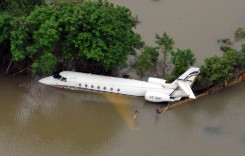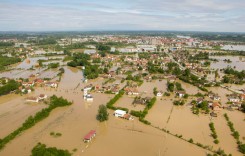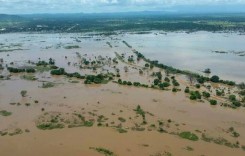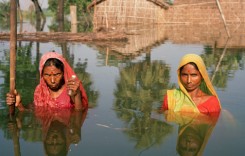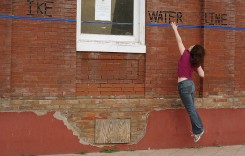Flash floods triggered by heavy rains have left a trail of devastation in northern Afghanistan, claiming the lives of hundreds of people.

The catastrophic floods struck on 10 to 11 May 2024. As of 13 May, the World Health Organization reported over 300 fatalities in the provinces of of Baghlan, Takhar and Badakhshan. This figure was provisional and given the scale of the disaster was expected to rise further. Floods also damaged or destroyed thousands of homes. Livestock losses have added to the toll of destruction.
Villages across Baghlan province have been particularly hard-hit, with reports indicating significant damage to infrastructure, including critical health care facilities and water supply systems. The floods have rendered roads impassable, hindering rescue and relief efforts in the affected areas.
According to the UN Office for the Coordination of Humanitarian Affairs (UN OCHA), as many as 73 fatalities and 76 injuries were confirmed in Baghlani Jadid district in Baghlan province, where 1,500 houses have been damaged or destroyed. In Burka district of the same province, at least 70 people have lost their lives, with 150 people injured and 5,000 homes damaged or destroyed. Elsewhere, fatalities and material damages were were reported across Dahnai Ghori, Guzargah Noor, Jelga, Narin and Puli Khumri districts. Hundreds of homes were reported as damaged or destroyed in Khost and Tala wa barfak districts.
UN OCHA also reported 24 fatalities in Takhar Province, with communities in the districts of Chall, Ishkamish, Farkhar and Namak Ab severely impacted.
In Badakhshan Province, Teshkan district has been the most affected with 200 homes, 50 bridges and 30 electricity dams destroyed or damaged and 2,000 animals killed, UN OCHA said.

The situation remains dire as search and rescue operations continue amidst concerns of rising casualty figures. Efforts to reach isolated villages cut off by the floods have been hampered, leaving many communities without access to essential aid and support.
The Afghanistan National Disaster Management Authority (ANDMA) reported that as many as 6 villages in affected areas are completely inaccessible for humanitarian teams. ANDMA is arranging for air force lifting of response teams to these villages, the World Health Organization (WHO) said.
In the wake of the disaster, the Taliban’s economy minister issued a plea for urgent international assistance to aid those affected by the floods.
The extent of the damage has prompted concerns from humanitarian organizations. Save the Children’s Afghanistan director, Arshad Malik, emphasised the urgent need for support, especially for the estimated 310,000 children residing in the worst-affected districts.
WHO Afghanistan said teams swiftly responded to the flooding crisis in by delivering 7 metric tonnes of essential medicines, medical supplies, and kits.

Social Media
🔴Breaking: Flash floods ravage #Afghanistan, killing more than 300 people in Baghlan and destroying more than 1000 houses.
This has been one of many floods over the last few weeks, due to unusually heavy rainfall. WFP is now distributing fortified biscuits to the survivors. pic.twitter.com/X4AaBW5TIC
— WFP in Afghanistan (@WFP_Afghanistan) May 11, 2024
🚨The death toll has exceeded 300, and sadly, we expect this number to rise. The flood has also destroyed more than 2,000 homes.
We operate 16 warehouses throughout #Afghanistan, and we are working with our partners to provide lifesaving aid to the affected people. https://t.co/ZlHLJGmPLF pic.twitter.com/uc5orB6wNq
— IOM Afghanistan (@IOMAfghanistan) May 12, 2024



